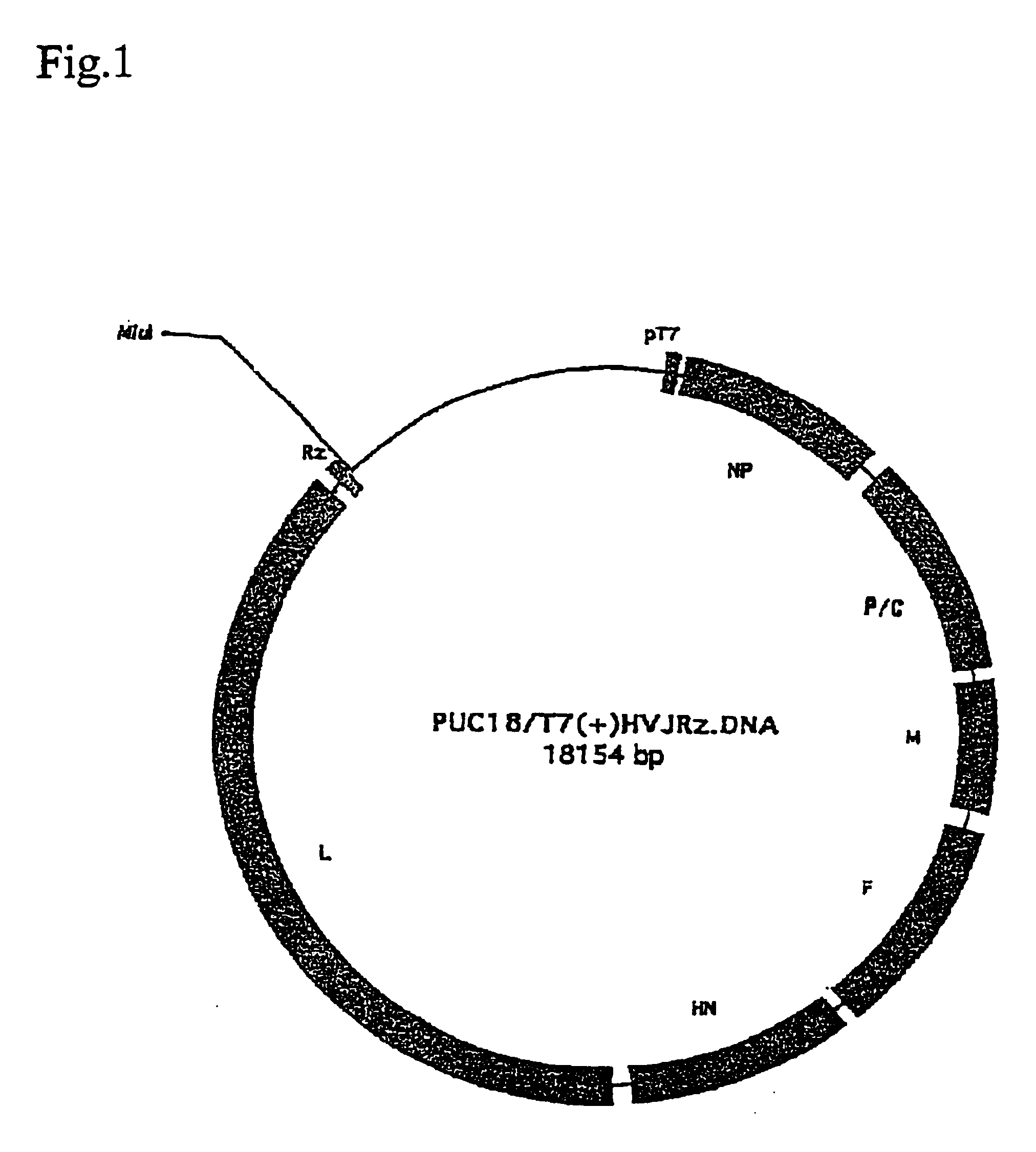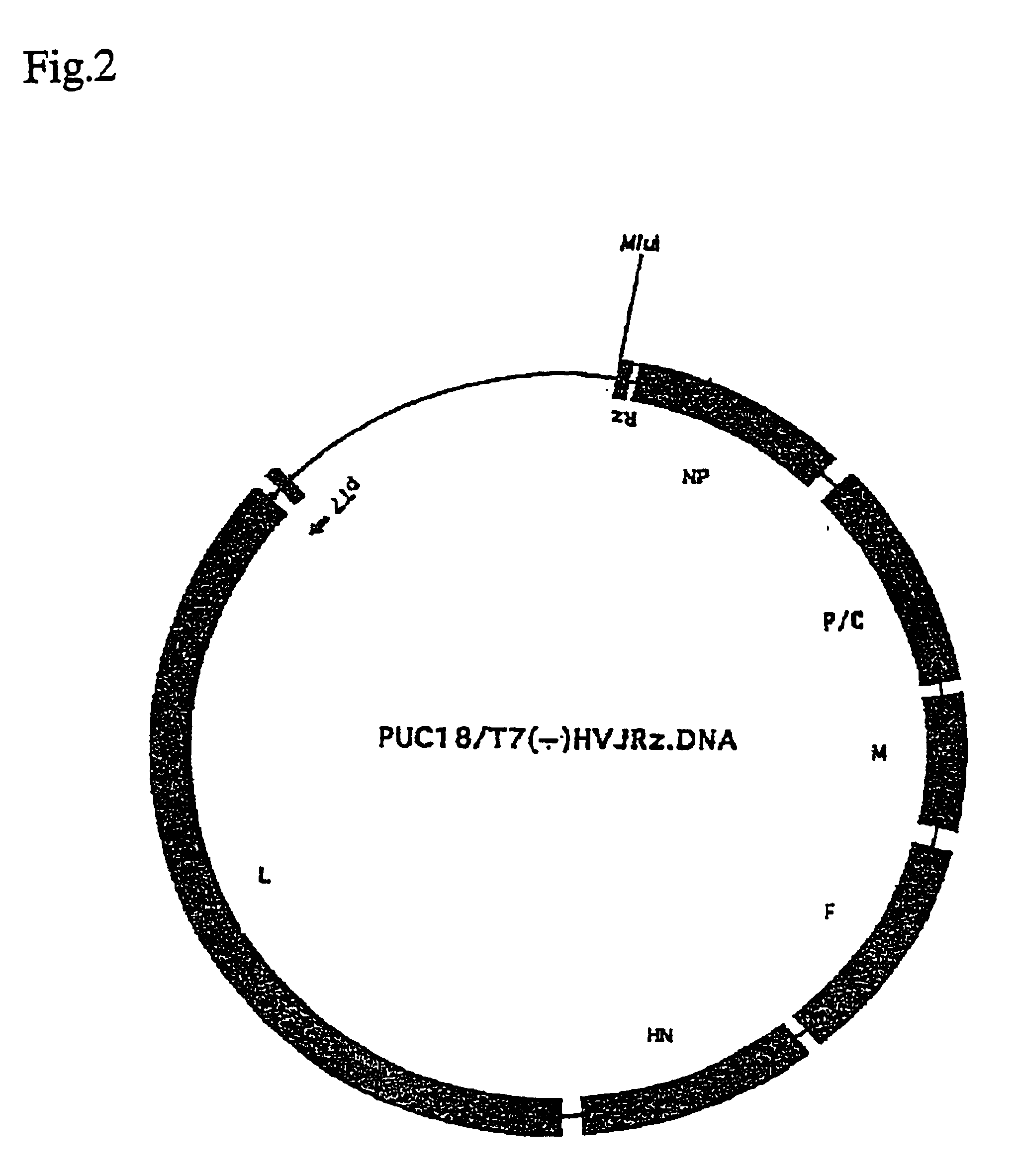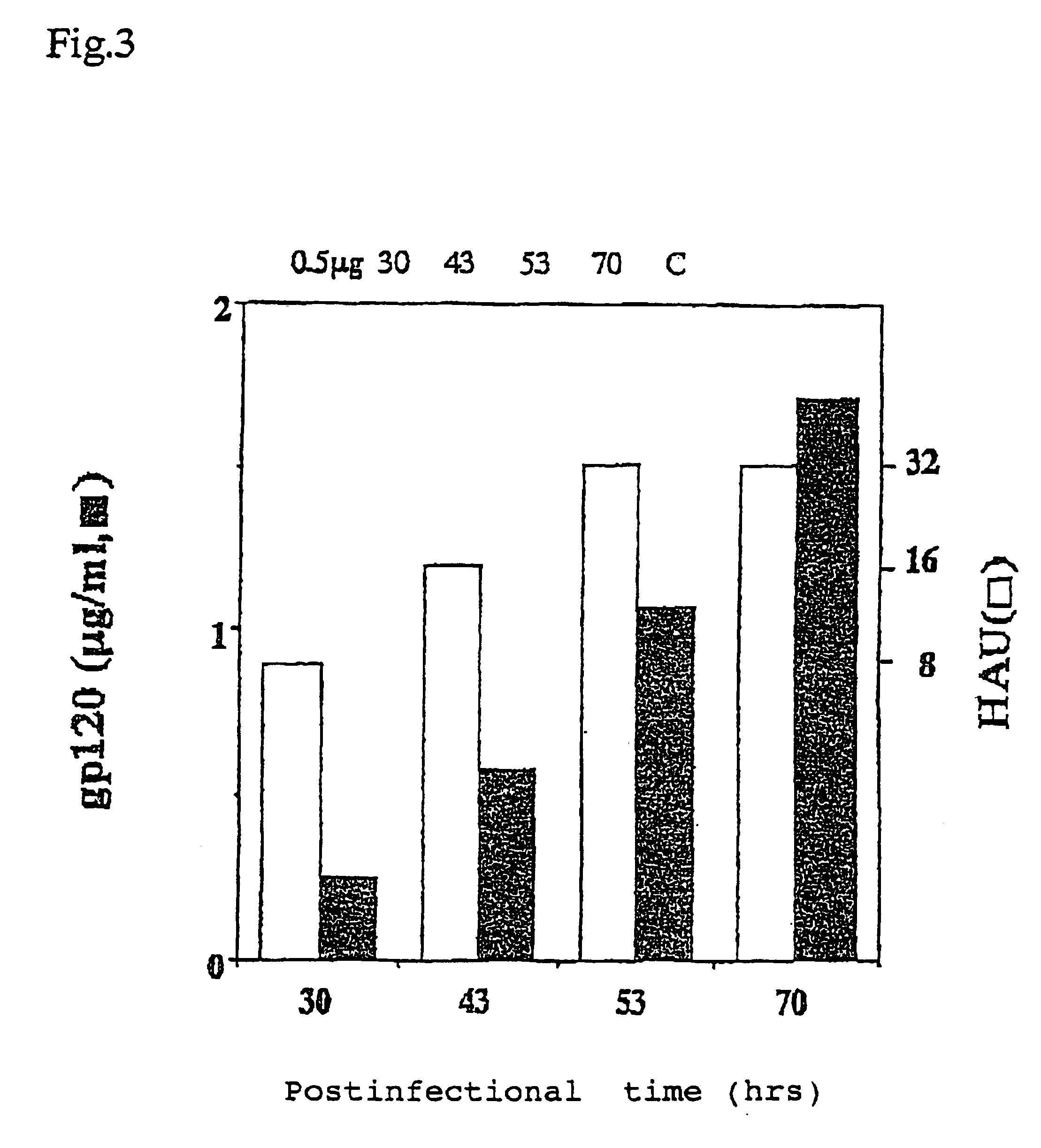Recombinant Sendai virus
a technology of recombinant sendai virus and rna, which is applied in the direction of viruses, peptides, dna/rna fragmentation, etc., can solve the problems of host cells not supporting the reconstitution system of the sendai virus has not been established, and the host cells cannot support the generation of negative-strand rna virus, etc., to enhance or reduce the transcription and replication capabilities
- Summary
- Abstract
- Description
- Claims
- Application Information
AI Technical Summary
Benefits of technology
Problems solved by technology
Method used
Image
Examples
example 1
[EXAMPLE 1]
Preparation of Sendai virus transcription units pUC18 / T7(−)HVJRz.DNA and pUC18 / T7(+)HVJRz.DNA
[0052]Plasmid pUC18 / T7 (−)HVJRz.DNA was constructed by inserting a DNA molecule comprising T7 RNA polymerase promoter, Sendai virus cDNA designed to be transcribed to the negative strand RNA and the ribozyme gene in this order into PUC8 vector. Also, plasmid pUC18 / T7 (+) HVJRz.DNA was constructed by inserting a DNA molecule comprising T7 RNA polymerase promoter, Sendai virus cDNA designed to be transcribed to the positive strand RNA and the ribozyme gene in this order into pUC18 vector. Constructions of pUC18 / T7(−)HVJRz.DNA and pUC18 / T7(+)HVJRz.DNA are shown in FIGS. 1 and 2, respectively.
example 2
[EXAMPLE 2]
Reconstitution experiment of Sendai virus from cDNA
[0053]LLC-MK2 cells (2×106) trypsinized in a usual manner were placed in a 60-mm diameter plastic dish, and incubated in MEM medium (MEM supplemented with 10% FBS) (2 ml) in a 5% CO2 atmosphere at 37° C. for 24 h. After removing the medium and washing with PBS (1 ml), a suspension of recombinant vaccinia virus vTF7-3 expressing T7 polymerase in PBS (0.1 ml) was added to the cells at the multiplicity of infection (moi) of 2. The dish was gently agitated every 15 min to thoroughly spread the viral solution for 1 h infection. After removing the viral solution and washing with PBS (1 ml), a medium containing cDNA, which was prepared as follows, was added to the dish.
[0054]Nucleic acids shown in Tables 1 and 2 (containing plasmids expressing factors required for the replication of Sendai virus, pGEM-L, pGEM-P / C and pGEM-NP) were placed in a 1.5-ml sampling tube, and adjusted to a total volume of 0.1 ml with HBS (Hepes buffered...
example 3
[EXAMPLE 3]
Survey of RNA replication factors required for Sendai virus reconstitution
[0064]Experiments were performed to examine whether all three plasmids expressing the L, P / C and NP proteins were required for the reconstitution of Sendai virus. Experimental methods were similar to those described in Example 2 except that any combinations of two out of pGEM-L, pGEM-P / C and pGEM-NP plasmids or only one out of them, instead of all these three combined as in Example 2, were introduced together with a template cDNA into cells.
[0065]Table 2 shows Sendai virus template cDNAs introduced into LLC-MK2 cells, amounts of the cDNA factors required for RNA replication including pGEM-L, pGEM-P / C and pGEM-NP, incubation time, number of cells inoculated into chicken eggs, and values of HAU and PFU.
[0066]
TABLE 2TotalNumberTemplateamountpGEM-pGEM-pGEM-Incubationof cellscDNA(μg)LP / CNFtime (h)inoculatedHAUPFU(+) cDNA / C10424401.00 × 1052566 × 108(+) cDNA / C10424401.00 × 1065124 × 109(+) cDNA / C10024401....
PUM
| Property | Measurement | Unit |
|---|---|---|
| diameter | aaaaa | aaaaa |
| total volume | aaaaa | aaaaa |
| pH | aaaaa | aaaaa |
Abstract
Description
Claims
Application Information
 Login to View More
Login to View More - R&D
- Intellectual Property
- Life Sciences
- Materials
- Tech Scout
- Unparalleled Data Quality
- Higher Quality Content
- 60% Fewer Hallucinations
Browse by: Latest US Patents, China's latest patents, Technical Efficacy Thesaurus, Application Domain, Technology Topic, Popular Technical Reports.
© 2025 PatSnap. All rights reserved.Legal|Privacy policy|Modern Slavery Act Transparency Statement|Sitemap|About US| Contact US: help@patsnap.com



